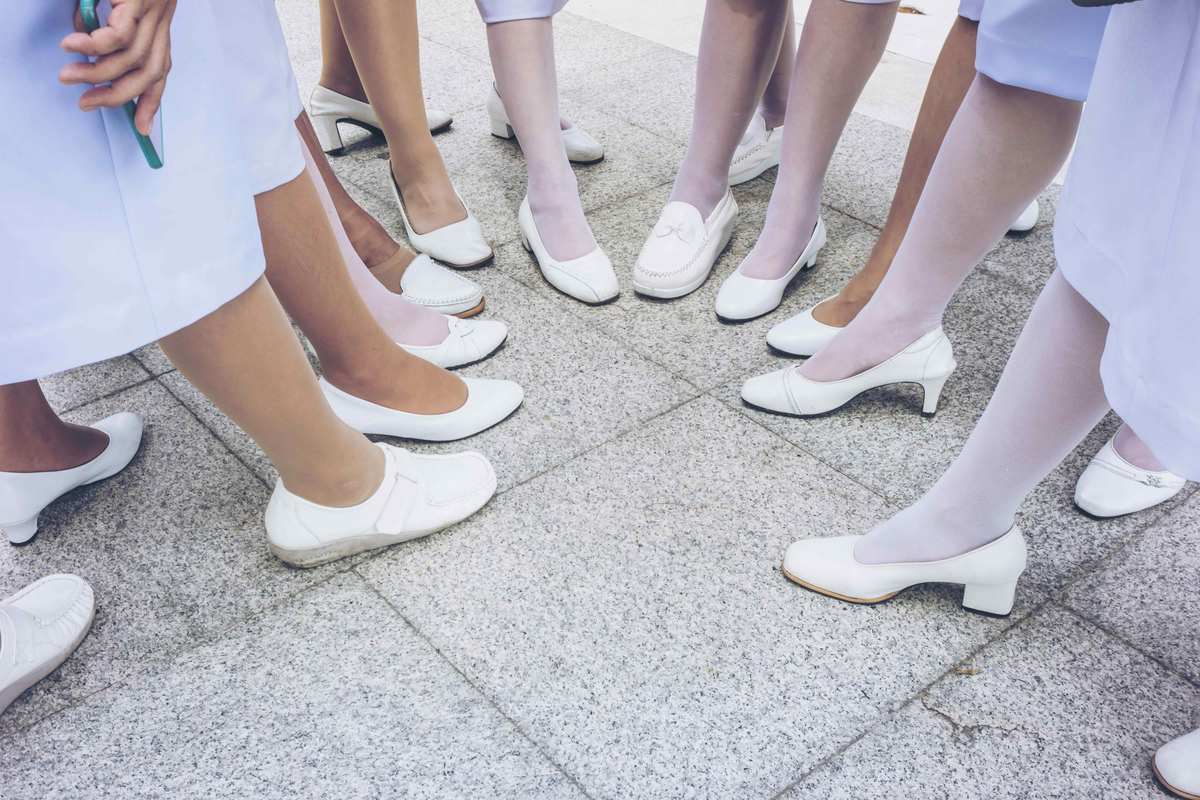Your Best Foot Forward: Choosing The Right Nursing Shoes

Nurses are no strangers to the pains of aching feet and empty stomachs, and this week’s blog post aims to help you out with both, starting with the rumbling of a missed meal. This Wednesday, June 14, Chipotle restaurants nationwide are offering nurses a “Code Burrito”-bring in your nurse’s ID to for a “buy one, get one free” on all burritos, tacos, bowls, or salads.
As for the aching feet (and by association, legs and back), that’s an issue that can be a little more complicated. The answer, of course, is to choose the right pair of nursing shoes, but with so many options and varieties available, this can be a daunting task. The shoes that work for your co-worker may not work for you, and choosing the wrong pair can make those 12-hour shifts feel like an eternity. It can also result in “heel pain, plantar fasciitis, shin splints, knee pain, hip pain, or low back pain”, so as you can see, a lot rests on your decision (no pun intended).
Here are a few things to consider when buying your next pair:
Biomechanics – According to ScrubsMag.com, feet are designed to do two things with every step-absorb the shock of the first step, and provide you with a push for your second. This is accomplished through specific biomechanical motions, such as pronation (rolling in) and supination (rolling out). But no two steps are the same, and some people’s gaits will over-pronate while others can under-pronate, causing fatigue and pain either way. In the end, it all comes down to your foot’s arch (look at the wet outline of your footprint after a shower for a good indication of how high or low your arch is).
ScrubsMag.com suggests that “If you have a low arch (flat feet/over-pronator), you should choose Motion Control Shoes. If you have a normal arch (neutral pronation), you should choose Stability Shoes. If you have a high arch (under-pronator), you should choose Cushioned Shoes. (Keep in mind that high arch and under-pronation are extremely rare.)”
Age of Current Shoes – Experts suggest that you switch out your shoes every 500 miles-and those miles add up quickly in a hospital hallway. Your shoes’ support can wear down over time, so even if you choose the perfect pair to start, they can wind up hurting you in the end if you hold on to them too long.
Style – Sneakers, clogs, and slip-ons are the most popular choices for nursing shoes, and each is built for different scenarios. If you’re in a fast-paced department (such as the emergency room) where speed and mobility are factors, sneakers are the best choice. Slower paced shift? Slip-ons can provide support and comfort, while clogs can offer a little extra wiggle room for aching feet and can relieve pressure points. (Though always check your hospital or clinic’s footwear requirements first).
Account For Swelling – A good shoe doesn’t need to be broken in-it should feel comfortable from the start. And keep in mind that after a long day on your feet, you may experience some swelling, so size your shoes so you’ll be just as comfortable at the end of the day as you are at the beginning.
Slip-Prevention – Lots of things wind up on the floors of hospitals. Lots of things. And spills plus linoleum can add up to a painful fall. Be sure and choose a shoe with slip-prevention attributes.
And as a bonus suggestion, in addition to the right shoes, wearing compression socks can also go a long way to both easing foot pain and preventing spider and varicose veins.
Of course, if you continue to struggle with foot, leg, or back pain, consult a specialist to find a solution that works best. The less you have to think about your aches, the more you’ll be able to think about your patients, and that’s a win/win for all of us.
For more information on starting a career in nursing, contact Unitek College today for information on our fast track nursing and medical assistant programs.
